The Surrealist movement produced a plethora of renowned and influential paintings during the 20th century, establishing its artists as pioneering figures in the realm of art history. Stemming from the Dada movement, which defiantly challenged traditional art with anti-art creations, Surrealism embraced experimentation and avant-garde approaches. The aftermath of World War I, with its profound societal impact, fueled the enthusiasm of Surrealist artists to dismantle established power structures through their art.
Sigmund Freud’s psychoanalytic theory profoundly influenced Surrealism. Artists sought to tap into their unconscious minds, unlocking a wellspring of creativity, imagination, desires, and dreams. Rejecting the confines of rationality, Surrealists aimed to bypass logic and delve into the depths of their psyche. This liberation from the rational mind allowed for the creation of artworks imbued with absurd imagery, simultaneously amusing and disquieting. Surrealist artists skillfully employed contradictions, introducing a new dimension of artistic expression previously unseen in the art world.
Through their unique approach, Surrealists harnessed the power of the subconscious to challenge conventions and push the boundaries of artistic possibility. The impact of Surrealism on the visual arts remains significant, reshaping artistic discourse and inviting audiences to explore the enigmatic realms of the human psyche
In this article, we will look at 10 most famous Surrealist artists of all time:
Salvador Dali
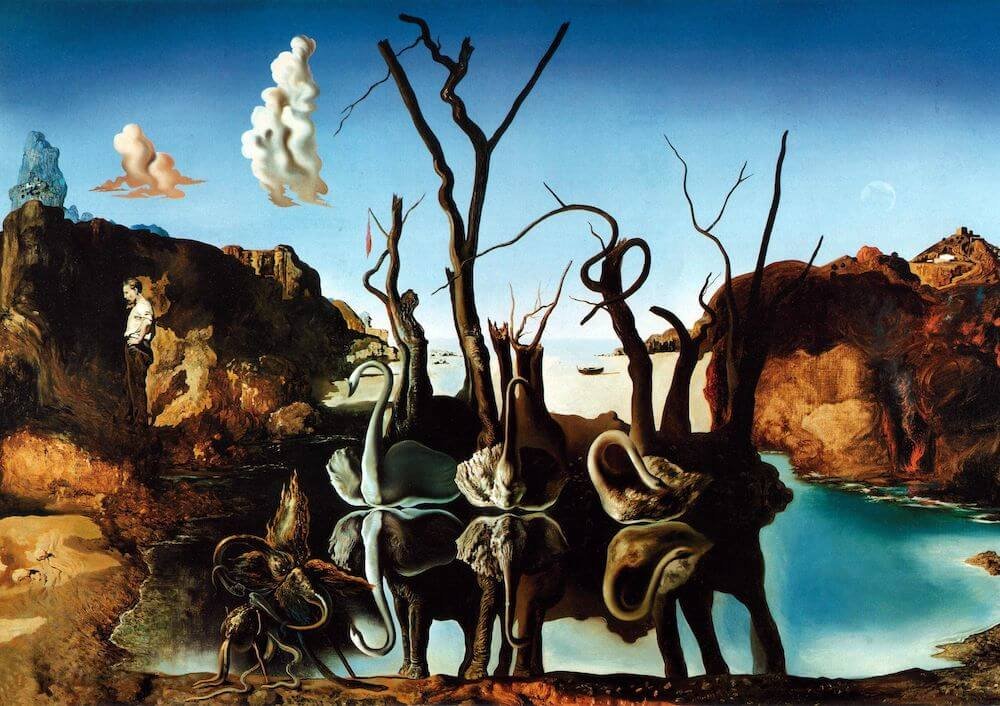
Salvador Dali, one of the most renowned Spanish artists in history, left an indelible mark with his surrealist paintings that delved into the depths of the human subconscious. Born on May 11, 1904, Dali was inspired by the writings of Austrian neurologist Sigmund Freud, due to which he embarked on an introspective journey, unearthing the hidden recesses of the mind. In the 1920s, during his art studies in Madrid, Dali’s encounter with surrealism proved to be a transformative experience. Along the way, he crossed paths with fellow artists Pablo Picasso and Rene Magritte, whose creative insights further molded his artistic perspective.
Embracing what he termed “paranoid-critical” thinking, Dali began creating paintings that portrayed a hallucinatory state of consciousness. Venturing to Paris, France, he joined the surrealist movement, where he produced some of his most remarkable works. Each canvas unveiled a dreamlike realm where familiar objects slowly dissolved before our eyes, often set against the backdrop of his native Spain.
Among his most celebrated pieces are “The Persistence of Memory,” renowned as one of the greatest modern art paintings for its depiction of melting watches, “An Andalusian Dog,” and “The Golden Age.” In 1934, Dali’s refusal to take a firm stance against Spain’s leader Francisco Franco led to his expulsion from the surrealist movement. Nonetheless, his art continues to be regarded as some of the greatest ever produced in Spain, captivating audiences with its enduring brilliance.
Dorothea Tanning
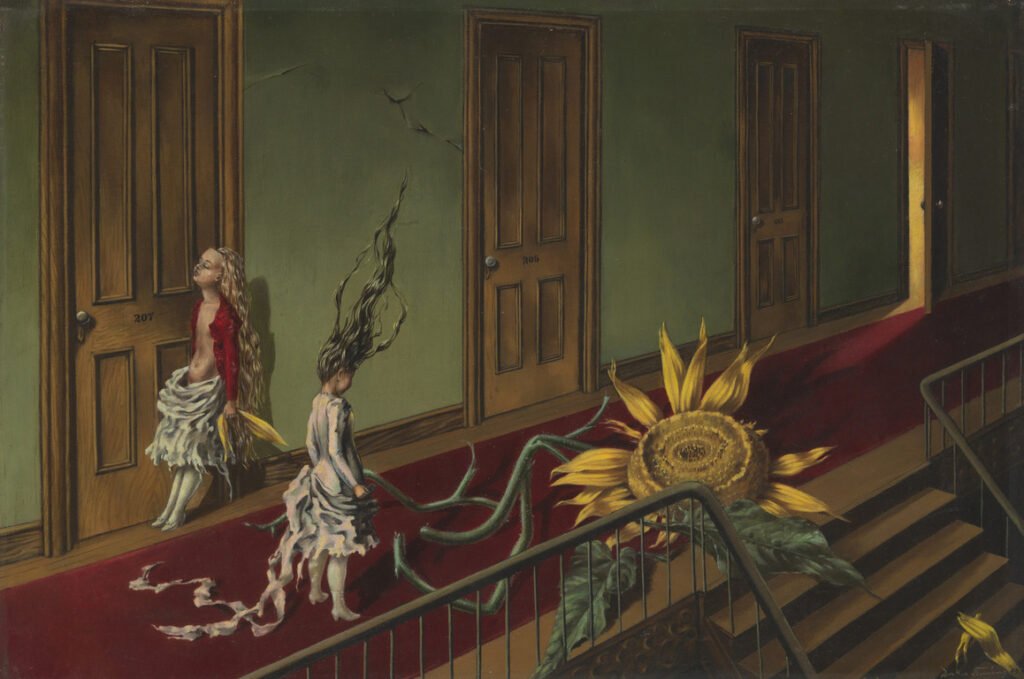
Born on August 25, 1910, Dorothea Margaret Tanning was a multi-talented American Surrealist artist. Her artistic pursuits spanned various mediums, including painting, printmaking, sculpture, writing, and poetry. She crafted a haunting and eerie world through her paintings, filled with unsettling and bizarre imagery. Her works featured oversized flowers, peeling wallpaper, and infinite doors, creating a sense of unease. She referred to these nightmarish realms in her art as “unknown but knowable states,” drawn from her inner subconscious thoughts.
Despite only attending the Chicago Academy of Fine Art for a brief period in 1930, Tanning was primarily a self-taught artist. While her surrealistic imagery in the 1940s and her close relationships with Surrealist artists and writers have led many to label her as a Surrealist painter, she developed her own distinct style throughout her six-decade-long artistic career. In her early works, such as “Birthday” and “Eine Kleine Nachtmusik” (1943, Tate Modern, London), Tanning employed precise figurative renderings within dream-like scenarios.
Tanning’s ability to transform ordinary domestic interiors into dream-like or claustrophobic spaces resonated with the oppressive experiences endured by many women in the early to mid-20th century, as they struggled against centuries of misogyny. Her penchant for Gothic and Romantic literature, which she devoured from her local library in her hometown of Galesburg, heavily influenced her artistic style and subject matter for years to come. These fantastical stories, brimming with imaginary imagery, left an indelible mark on her creative expression.
René Magritte
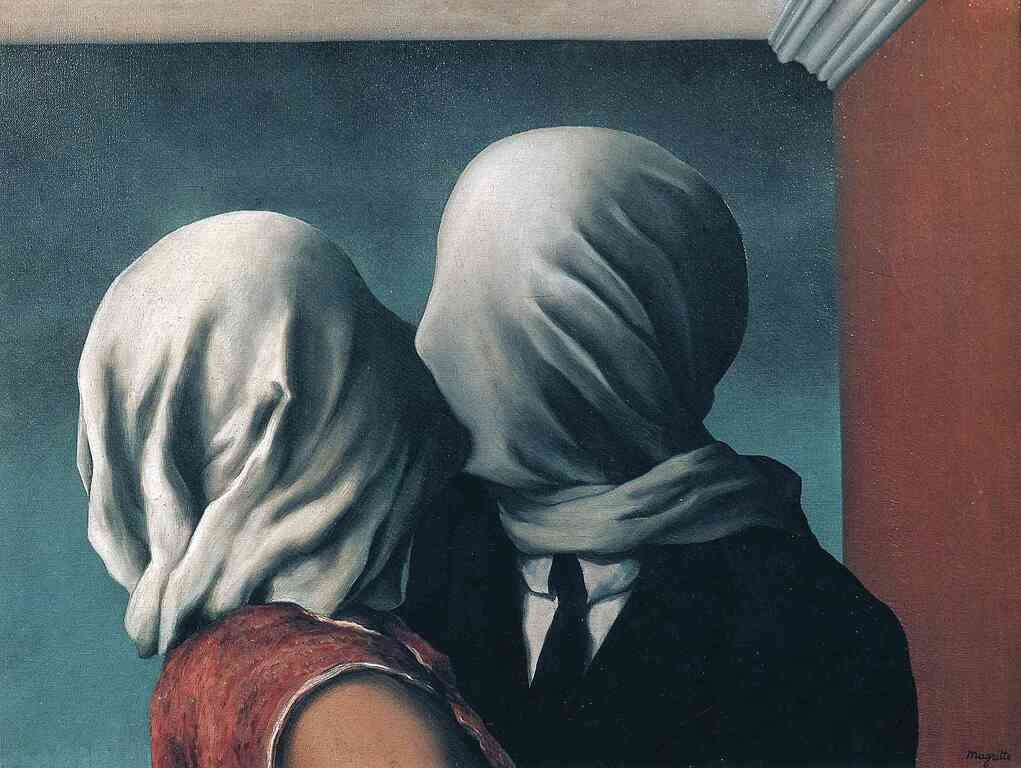
René Magritte was a Belgian surrealist artist, who gained renown for his extraordinary ability to present ordinary objects in extraordinary and thought-provoking ways. Through his imaginative creations, he pushed the boundaries of reality and representation, prompting viewers to question their perception of the world.
Magritte enrolled at the Académie Royale des Beaux-Arts in Brussels from 1916 to 1918, under the tutelage of Constant Montald. However, Magritte found the instruction offered at the academy to be uninspiring and lacking in artistic stimulation. He later continued his studies at the Académie Royale further expanding his artistic knowledge and influences. After a stint in the Belgian army, Magritte turned his focus to painting. During this period, he began to explore the depths of his imaginative vision and developed his distinct surrealist style.
Magritte’s artistic repertoire often showcases an assemblage of commonplace objects placed in unconventional settings, imbuing familiar items with fresh and unexpected meanings. His paintings excel in the transformative power of ordinary objects, portraying them in ways that challenge their conventional interpretation.
Throughout his artistic career, a recurring element in his art was the use of a cloth covering the face of the depicted subject. This symbolic motif represented his mother, who tragically took her own life by drowning near their family home when Magritte was just 13 years old. He saw the head of his mother concealed by her dress when the body was retrieved by the authorities.
Max Ernst
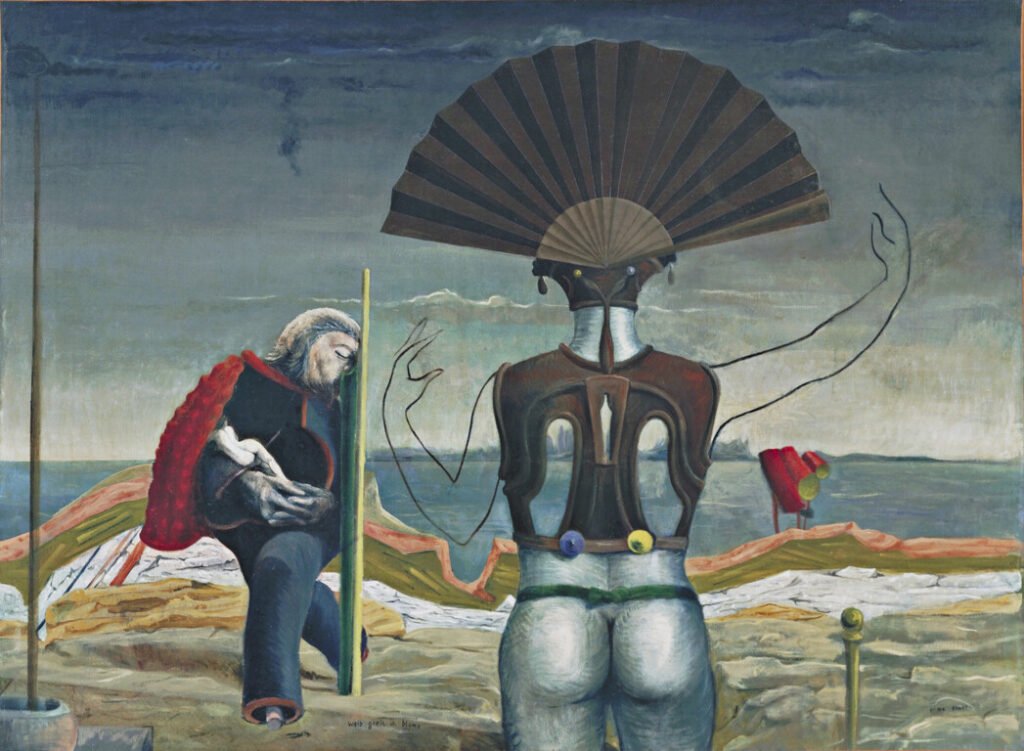
Max Ernst was a German artist who made significant contributions to the surrealist movement through his unique artistic vision. He was introduced to painting by his father and developed a passion for the arts from a young age. As he pursued art history at the University of Bonn, a transformative experience inspired him—an encounter with the paintings crafted by mentally-ill patients participating in a student program. This encounter would forever shape Ernst’s artistic trajectory.
Initially focusing on landscapes and human portraits, Ernst’s talent flourished, and he eventually heeded the advice of his close friend August Macke to pursue art full-time. In 1914, he crossed paths with Jean Arp, forming a lifelong friendship and creative partnership. Many noted the impact of Ernst’s military experiences on his finished paintings, which often featured cutout photographs arranged in a way that suggested multiple identities for the main subject.
Embracing the surrealist movement, Ernst incorporated two innovative techniques, frottage (rubbing a pencil against wood or fabric) and decalcomania (transferring paint from one surface to another), into his artistic repertoire. These methods allowed him to liberate images from his subconscious and translate them onto the canvas.
Leonora Carrington
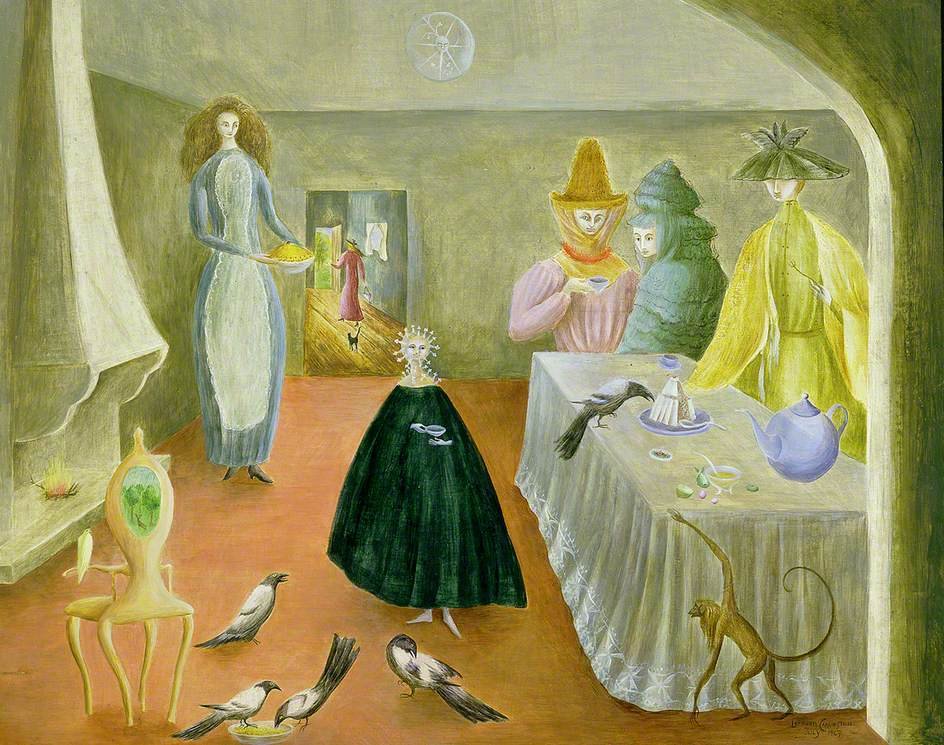
Leonora Carrington, a British-born Mexican painter conjured a fantastical realm in her art, populated by enchanting creatures inspired by folklore and mythology. Immersed in an ethereal and atmospheric light, her paintings explored themes of transformation, illuminating the intricate shades of human identity in a world marked by complexity. Hybrid beings, with wild hair, elongated necks, and wings, emerged from her brush, embodying the fusion of human and animal realms. Hyenas, symbols of her untamed spirit, and women exuding divine and spiritual powers were recurring elements in her art.
Carrington’s rebellious nature during her youth led her family to send her to Florence to pursue studies in art. She further honed her skills at the esteemed Ozenfant Academy in London. In 1937, a momentous encounter with Max Ernst, a renowned figure in the Surrealist movement, ignited Carrington’s artistic brilliance, propelling her into the realm of surrealism.
Relocating to Spain, she underwent a profound mental transformation that would shape her future artistic endeavors. Despite the challenges she confronted, Carrington garnered significant recognition in the late 1940s as an extraordinary female surrealist painter.
André Breton

André Robert Breton, a French writer and poet, played a pivotal role as the co-founder, leader, and chief theorist of surrealism. Renowned for his influential writings, including works like “Nadja” and “L’Amour fou,” Breton left an indelible mark on the literary landscape. In 1924, he published the groundbreaking Surrealist Manifesto, solidifying his position as a visionary.
Serving as the editor of the magazine La Révolution surréaliste, Breton curated a platform for avant-garde expression. His multifaceted endeavors, encompassing critical analysis and theoretical exploration of writing and the visual arts, established him as a central figure in French art and literature of the twentieth century.
Jean Arp
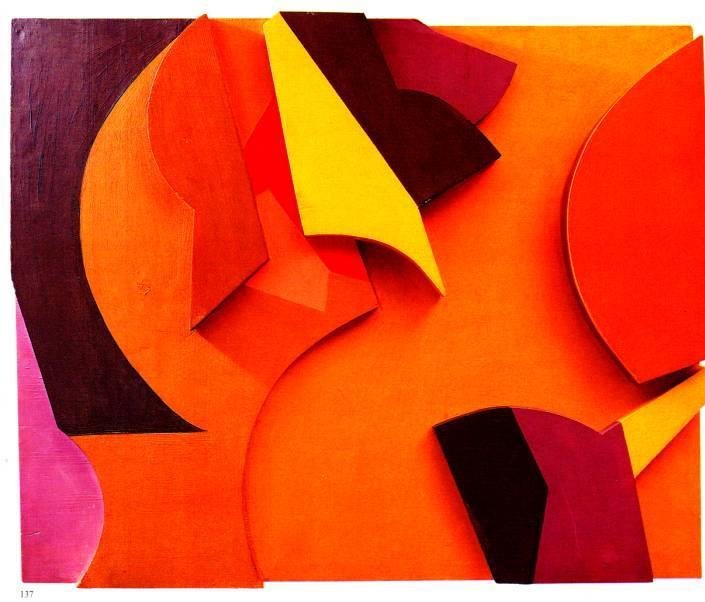
Born on September 16, 1885, Jean Arp was an incredibly versatile artist of the early 20th century. He left an indelible mark on the Dada and Surrealist movements through his multifaceted creative expression. Across various mediums such as sculptures, paintings, drawings, collages, and poems, Arp’s artistic range knew no bounds.
Arp’s sculptures stood out with their distinctively fluid and undulating lines, earning them the epithet of “organic abstractions.” His approach aimed to minimize the influence of the conscious mind, embracing chance and spontaneity as integral elements of the creative process.
Throughout his illustrious career, Arp’s exceptional talent garnered numerous accolades. He was honored with the esteemed Grand Prize for sculpture at the 1954 Venice Biennale. His sculptures continued to captivate audiences, earning prestigious prizes at the 1964 Pittsburgh International and the esteemed 1963 Grand Prix National des Arts. His accomplishments were further acknowledged through the prestigious Order of Merit with a Star of the German Republic.
Joan Miró

Joan Miró, a Spanish painter, sculptor, and ceramicist born in Barcelona, was a prominent figure in the realm of surrealism. His artistic journey encompassed explorations of Fauvism and Expressionism, which occasionally intertwined with his surrealist works. In 1924, after experimenting with various artistic elements, Miró formally joined the Surrealist movement and relocated to Paris, where he shared a studio with fellow artists André Mason and Max Ernst.
Renowned for his avant-garde approach, Miró’s paintings exhibited an abundance of vibrant colors, intricate geometric shapes, and a diverse range of perspectives. These became hallmark features in his extensive body of work, as he ingeniously combined and juxtaposed them to create simplified yet evocative abstract compositions.
Delving into the realm of the subconscious, Miró’s art was imbued with a fascination for this hidden realm of the mind. To explore this interest, he incorporated childlike and naive objects into his paintings, as he believed they provided a pathway to decipher the obscured truths of the subconscious. Miró’s artistic vision was both enigmatic and deeply personal, as he introduced his own unique vocabulary of abstract and playful forms. His work often resonates as the epitome of Surrealism, inviting viewers to immerse themselves in a world of puzzling and evocative imagery. Through his profound exploration of the subconscious and his mastery of abstract expression, Miró’s artistic legacy continues to captivate and inspire
Yves Tanguy

Yves Tanguy, a French-American artist, left a profound impact on the succeeding generation of painters in the surrealist genre. Setting himself apart from his contemporaries, Tanguy employed elements of naturalism and realism to depict the dreamlike imagery prevalent in surrealist art. His works often featured surreal landscapes that managed to evoke a sense of plausibility, captivating his audience.
In the year 1924, Tanguy was introduced to the vibrant circle of surrealist artists revolving around André Breton. It was within this artistic community that Tanguy’s creative spirit flourished, and he embarked on a journey of self-discovery, forging his own distinctive painting style, and giving his first solo exhibition in Paris in 1927.
Notable among Tanguy’s creations are pieces like “Mama” and “Papa is Wounded.” When asked about his artistic approach, Tanguy described a process where images materialized on the canvas before his very eyes, with minimal conscious deliberation. The imagery seemed to emerge organically as he progressed through the creative journey.
For Tanguy, completing a piece of art granted him a liberating sense of freedom, as he eschewed conventional paths to capture images in his paintings. In 1937, Tanguy made the decision to relocate his family to Woodbury, Connecticut, and this transition brought about a more vibrant and colorful phase in his artwork.
Paul Delvaux
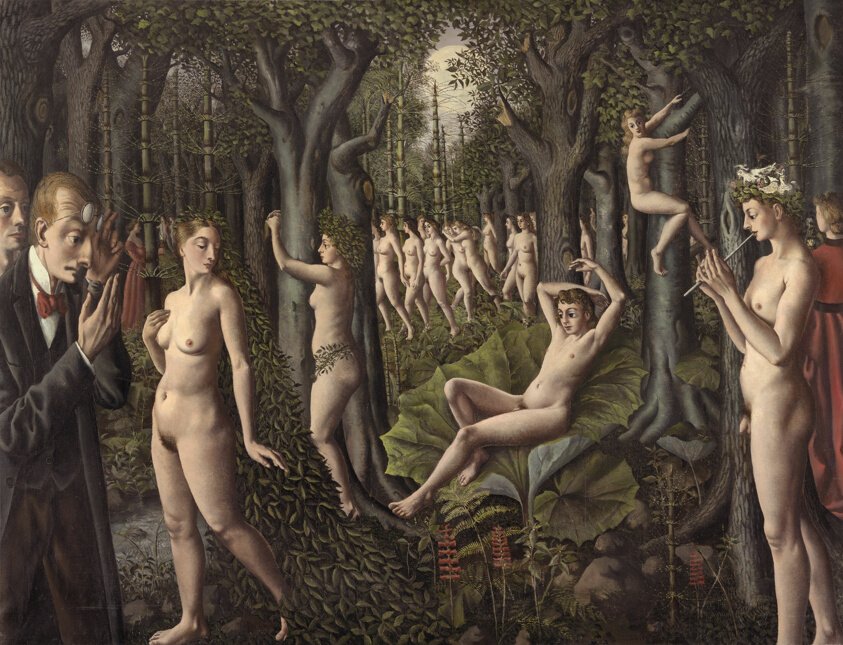
Paul Delvaux, a Belgian artist, skillfully blended surrealism with various art genres in his oil paintings. Drawing inspiration from fellow surrealists Giorgio de Chirico and René Magritte, Delvaux developed a unique style that left a profound impact. A prominent theme in his artworks was the depiction of nude women in intriguing scenarios, whether inside a building, on an outdoor patio, or waiting at a train station. Delvaux believed that these images conveyed the subconscious mind of many males.
As Delvaux’s career progressed, he became fascinated with exploring the visual equivalent of surrealist poetry, a trend gaining popularity within the movement. With skillful finesse, he merged these seemingly separate subjects, giving rise to compositions that were both mesmerizing and intellectually stimulating. Interestingly, despite his deep connections to the surrealist circle, Delvaux chose not to align himself explicitly with the movement.
